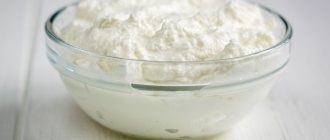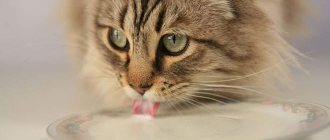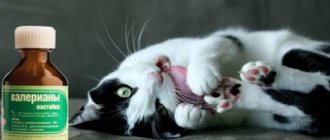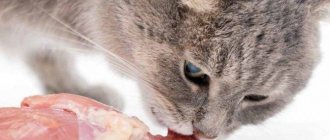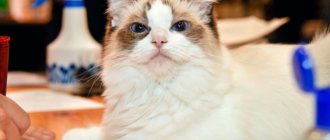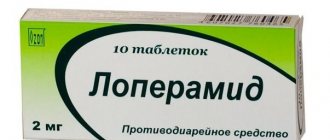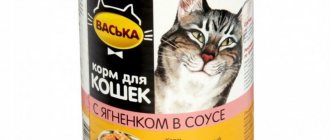When you get a kitten at home, it is important to remember that the animal’s diet should be complete and healthy. The main nutritional elements are fish, various lean meats and offal. However, for a complete set of vitamins and nutrients, eggs, vegetables, oils and dairy products, such as low-fat sour cream, are included in the menu.
The health, development and life of the pet depends on the choice and quantity of certain products.
The benefits of sour cream for cats
Sour cream, like other dairy products, is a source of calcium, amino acids, vitamins and many useful substances. Calcium is responsible for the proper development of the skeletal system, promotes the growth and strength of teeth, nails, and bones. Amino acids and vitamins strengthen, stabilize the entire functioning of the body, and also improve the condition of the skin and coat of your four-legged friend.
Content
Cats love milk and sour cream - everyone knows this. What village cat would refuse a saucer of homemade treats? But when asked whether cats can be given sour cream, veterinarians are in no hurry to answer in the affirmative. Why?
Useful properties of sour cream
Sour cream is a fermented milk product that is made from cow's milk using lactic acid fermentation, a process involving special bacteria. People have been eating it for a long time, adding it to first courses and salads. Pancakes, dumplings - everything becomes tastier with sour cream. And sour cream, like other dairy products, contains useful vitamins and microelements. Among them:
- animal proteins;
- fats;
- vitamins – group A, group B, C, D, E, H, PP;
- micro- and macroelements – calcium, magnesium, potassium, iodine, zinc;
- organic acids.
All these nutrients and beneficial substances have a beneficial effect on the body. Protein is the main source of energy and helps support the immune system. But the fat content in sour cream can vary. On sale you can find sour cream of different fat content - from 15% to 25%, as well as low-fat. The latter contains all the nutritional elements, but it does not contain saturated fatty acids, which negatively affect the condition of the heart and vascular system.
Sour cream contains cholesterol, which is involved in the process of cell formation and hormone production. However, we must not forget that elevated cholesterol levels in the blood can lead to blockage of blood vessels.
Among the minerals contained in sour cream, the first place in quantity belongs to calcium. The microelement, which is found in milk, cottage cheese, yogurt, kefir, is necessary for bone health, normal functioning of the heart and nervous system. Calcium promotes the growth and strengthening of the cat's bones and teeth. Phosphorus, which can also be found in sour cream, also supports the health of joints, nervous and muscular systems, as well as kidneys.
How to give sour cream to cats
Fermented milk products can be given to pets daily. The serving for kittens should not exceed 20 grams per day. Adults can be given 50-100 g of fermented milk every day. Please note that it is better to choose a fat content of sour cream up to 10%. It is advisable to sometimes replace this product with fermented baked milk, yogurt, kefir, cottage cheese, yogurt, whey, and unsalted cheese.
If your kitten doesn't like sour cream, then you should mix it with foods that he likes. This is done at least twice a week. At the same time, it can be additionally diluted with water.
All products are introduced into the diet gradually. When introducing new food, you should carefully monitor the health and mood of your pet.
Is it possible at all?
Dairy products are a very valuable source of calcium for all mammals; they help bones grow and become stronger. Fermented milk also perfectly regulates the digestive system and strengthens the immune system.
Allowed dairy products:
- Kefir.
- Low-fat and unsweetened yogurt without additives.
- Cottage cheese.
- Curdled milk.
- Ryazhenka.
- Cream 10%.
- Sour cream 10 or 15%.
- Unsalted cheese.
Kittens usually digest whole milk very poorly, but fermented milk is excellent. So you can give them every day, 20 grams, alternating and making your pet happy.
When not to eat sour cream
An animal that eats dry food should not be given sour cream. The carefully selected composition of the feed completely saturates and provides all the necessary substances and microelements, so an additionally introduced fermented milk product can cause digestive upset.
You should not give sour cream to the following breeds of cats: Persian, Angora, British.
There is individual lactose intolerance. In this case, milk sugar is not absorbed by the digestive system. In this case, the consumption of milk must be completely avoided. Fermentation occurs in fermented milk products and lactose is converted into lactic acid. For this reason, even if you are lactose intolerant, you can eat fermented milk products.
Responsibly and carefully plan your kitten's diet. After all, it is from properly balanced food that the animal receives all the necessary vitamins, minerals and nutrients. By following all the recommendations and advice of experts, you will raise a healthy, beautiful and smart pet.
List of not recommended products
Products that are not recommended fall into the category of “possible, but not recommended.” Let's weigh the pros and cons.
Not recommended products:
Milk
Little kittens drink their mother's milk; it contains everything they need for their health and development. With age, lactose is less absorbed by the body - even with a small dose of cow's or goat's milk, a cat may develop diarrhea.
But if the cat does not experience vomiting or diarrhea, milk can be given in small quantities (fat content 2.5% and no more than 10 ml per 1 kg of body).
Canned food
You can give it to your cat, but in small portions, mixing it with oatmeal porridge, for example. Before presenting the animal with a treat, it is advisable to drain the oil from the jar.
Sausages
The opinions of cat owners on sausages are divided: some believe that sausages are unacceptable, while others pamper their pets with delicious sausages and sausages. If the sausage is raw and without lard, you can safely feed it to your cat.
The best thing an owner who loves his pet can do is monitor his reaction to food. Each animal is suitable for different food - what is best absorbed by the body should be given.
Raw meat
Cats are carnivorous animals and they need raw meat, but not all types are suitable. Veterinarians advise avoiding pork and other fatty varieties for feeding: duck and goose, since even a small portion of fatty meat leads to obesity.
Bread products
Pasta, bread and yeast dough. Yeast, entering the body, swells and stretches the animal’s stomach, which causes severe pain. Pasta and baked goods lead to flatulence and colic. But a small piece of whole grain bread won't lead to trouble.
Liver
This product contains toxic amounts of vitamin A, causing poisoning. Raw liver can be contaminated with bacteria (the same goes for raw fish). It would not be surprising if your cat develops diarrhea or a fever after eating. If a cat loves liver, it must be thermally treated.
Eggs
This product is rich in calcium, and its deficiency is dangerous for growing kittens. Sometimes eggs are dangerous for a kitten; it is best to give your baby homemade eggs.
Veterinarians agree that an adult cat can only benefit from quail and chicken eggs, but they should be given to the animal in moderation. Some cats are allergic to protein.
Apples
There will be no harm from the apples; on the contrary, the urine will be acidified and stones will not form. If your cat likes to chew on apples, let him, but you should remove the seeds. You can also give it in small quantities.
Potato
You can give your pet a small piece of boiled potato as a treat, but the product should not be used as part of the diet.
Avocado
Cats may be interested in avocado because it smells like boiled chicken. Avocado is allowed, but in moderate doses (optimal serving: 2 teaspoons).
Expert's opinion Vera Ivanovna Dusheba In 2010 she graduated from the Moscow State Academy of Veterinary Medicine named after K.I. Scriabin with honors, specializing in veterinary medicine. I regularly attend veterinary conferences, congresses, and webinars.
If the cat initially ate meat, it should continue to be fed. If an animal eats dry food, meat should be a rare guest in the bowl and with additives. Meat is phosphorus, it must be balanced with calcium, otherwise problems with bones will appear. For 100 g of meat you will need 1 tablet of calcide.
Feeding a newborn kitten
Unfortunately, sometimes newborn kittens are left without a mother, and sometimes the cat, for some reason, cannot feed them. That’s when a person has to perform the functions of a wet nurse and care for helpless babies. Of course, a person is not able to completely replace a mother cat, but he is quite capable of helping a kitten survive.
Let’s immediately make a reservation that feeding a kitten is a very, very troublesome task and no less responsible. Without food, the baby will die, and you will have to feed him very often. In addition to the feeding regimen, you need to familiarize yourself with the method of feeding a newborn baby. Weight gain is the most important indicator by which you can judge the baby’s development. Therefore, for the first two weeks of his life, you will have to weigh the kitten every day. And starting from the third week, the baby is weighed every three days. Note that from this moment on, the weight of the small cat will increase more rapidly than the weight of the cat.
Slow weight gain indicates an incorrect feeding regimen or insufficient food intake. A newborn kitten weighs from eighty to one hundred and thirty grams - it all depends on the breed of the baby. Within a week, his weight should double, and then increase by about one hundred grams every week. Kittens at eight weeks of age weigh approximately one kilogram.
The first thing you need to do is purchase a cat milk substitute at a pet store or learn how to prepare formula for feeding yourself. Regular cow's (and even goat's!) milk is not suitable for feeding kittens, since the protein content in it is ten times lower than in cat's milk. To prepare the milk mixture, you need to mix four parts of cow's (boiled) milk and one part of raw egg white. All this must be whipped until smooth and heated to the required temperature. You can also use baby food for infants. But to feed a small cat, you need to dilute this mixture twice as thin as for a child.
The feeding schedule is built in direct proportion to the dynamics of the kitten's weight gain. Every day, his weight should increase by about twenty grams, and for each gram gained, four to five grams of formula are added. But how many times a day you need to feed a kitten can be seen from the compiled schedule.
First week
For the first two days, the baby is fed every two hours, day and night. The third, fourth and fifth days - every two hours during the day and every three hours at night. From the fifth to the seventh day, the baby is fed every four hours. In the first week, the temperature of the mixture should be 38-39 degrees, and its volume should be 30 milliliters per hundred grams of the kitten’s weight in the first four days and 38 milliliters per hundred grams on the remaining days of the week.
Second week
The baby continues to be fed every four hours day and night. The volume of food is still 38 milliliters per hundred grams of kitten weight. But the temperature of the feeding mixture is reduced to 30-32 degrees.
Third week
The volume of food is increased to 46 milliliters for every hundred grams of the kitten’s weight. The temperature of the milk mixture is lowered to 28-30 degrees and the kitten continues to be fed every four hours during the day. Mother-fed babies begin to be fed from the fifteenth day of their life. But artificial animals are given bait only from the fourth week of life.
Fourth week
You can start giving your kids other foods: lean beef scraped or twisted in a meat grinder, lean cottage cheese, egg yolk. But it is still worth continuing to feed them formula milk. From this point on, the food temperature is brought to room temperature, and its volume remains the same - 46 milliliters for every hundred grams of the kitten’s weight.
For the first ten days, newborn kittens are fed only formula milk. And from the eleventh day it is necessary to gradually accustom babies to solid food. The easiest way is to alternate between milk mixture and very thin semolina porridge. But under no circumstances should sugar be added either to the mixture or to the semolina porridge.
For the first four weeks, the kitten should be fed only using a dropper, a very small nipple or a syringe without a needle. At the fifth week of life, it is necessary to begin to accustom a small cat to a bowl. This usually happens quite easily. Lubricate the baby's mouth with porridge or milk mixture and bring it to a shallow bowl - the hungry kitten begins to lap on its own.
Number of feedings
Kittens are essentially small children; they need to be fed more often so that they gain strength faster. Kittens should not remain hungry, overeating is also not acceptable, as in everything, the “golden mean” is valued here.
The milk tasted good
A 7-8 week old kitten needs to be fed 5-6 times a day, little by little, since such small bellies have not yet grown enough to accommodate a lot of food. When the kitten is 3-4 months old, the number of feedings can be reduced to four times, therefore, food portions increase. A six-month-old cat can be switched to three meals a day. But at 8 months, two feedings a day will be enough, which is very convenient for the owner.
We drink milk...
How to feed a kitten
There are life situations when a kitten loses its mother too early, or she cannot feed him. In this case, the best solution would be to feed him a special mixture - a cat's milk replacer. Cat food manufacturers offer mixtures whose composition is as close as possible to cat milk. The food should be diluted with water, according to the instructions, and the baby should be fed using a special nipple (at an angle of 45 degrees). As a last resort, you can use a syringe without a needle or a pipette.
For the first 21 days of life, feed the kitten every 2-3 hours, but do not force it to eat more than it wants. Cats about a month old are fed 4 times a day. Two meals are formula, the other two are wet food.
If for some reason you can’t buy a cat’s milk substitute, you can feed the kitten with baby food. Choose formulas for very young children and dilute them with more water than the rules written on the label.
In a critical situation, dilute goat's milk with water - it is preferable to cow's milk.
If the kitten is older than 3 months, it no longer needs to be fed and does not need to be given milk.
Restrictions
Some owners prefer to feed their pets prepared food. In this case, dairy products, including sour cream, cannot be introduced into the diet. This can harm the animal, since in such food all components are balanced. The amount of vitamins, minerals and nutrients is carefully calculated. Violation of these proportions, when the cat has also eaten sour cream, threatens with indigestion and stool problems.
Persian, Angora and British cats should not be given sour cream, even if they eat it with pleasure. Veterinarians claim that their delicate bodies do not cope well with this product. Diarrhea occurs and your health deteriorates greatly. It is better to replace sour cream with low-fat cottage cheese or yogurt. The one-time dose is 30 g. You can give it to your cat once a week, even if he actively and happily eats the treat.
When should you start complementary feeding and how many times should you feed your kitten per day?
Experts recommend introducing complementary foods into the diet with the appearance of the first milk teeth, at the age of 3-4 weeks.
In some cases, it is necessary to start complementary feeding earlier - the cat’s milk supply is low, mammary gland diseases, multiple births, when kittens do not have enough milk and they begin to lag in growth.
In order to know whether the kittens are receiving enough essential nutrients, you need to weigh them regularly, and if they fall behind, start feeding the kittens.
When controlling your weight, take into account the following standards:
- At birth, the average weight of a kitten is 100 g, plus or minus 20 g, which depends on heredity and breed.
- After about 10 days, the weight doubles, and subsequently increases by an average of 100 g per week.
- At two months, a large breed kitten should weigh on average 1100 g, plus or minus 200 g, while male cats weigh more than female cats.
It also happens that kittens are left without a mother and the owner has to take full charge of feeding.
Frequency of feeding kittens depending on age:
- In the first 14 days of life - 10 meals;
- From two weeks to one month, reduced to 8 meals;
- By two months they switch to feeding 7 times a day;
- From the 2nd to the 3rd month they feed 6 times;
- From 4 to 5 – 5 times;
- From 5 to 9 – 4 times;
- From 9 to 12 – 3 times;
- After a year they switch to two feedings a day.
In the case of artificial feeding, from birth to one month, kittens are also fed at night. The above norms are approximate, just as the interval between feedings is approximate; small kittens themselves will let you know when it’s time to feed them, showing concern.
